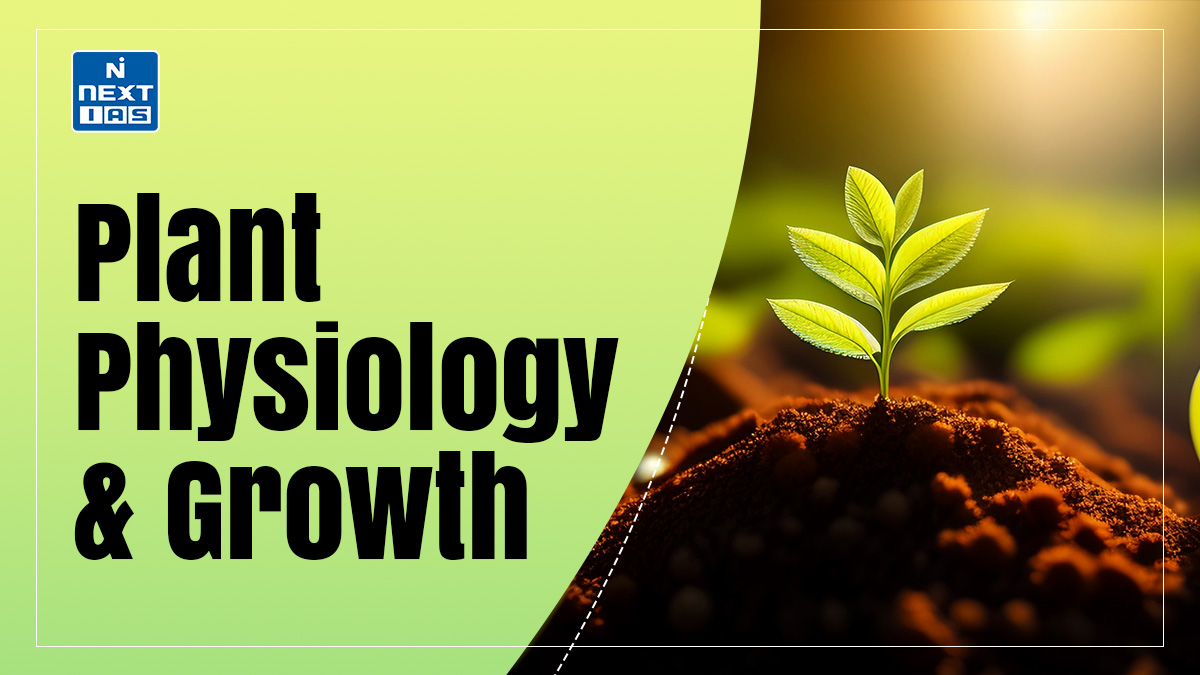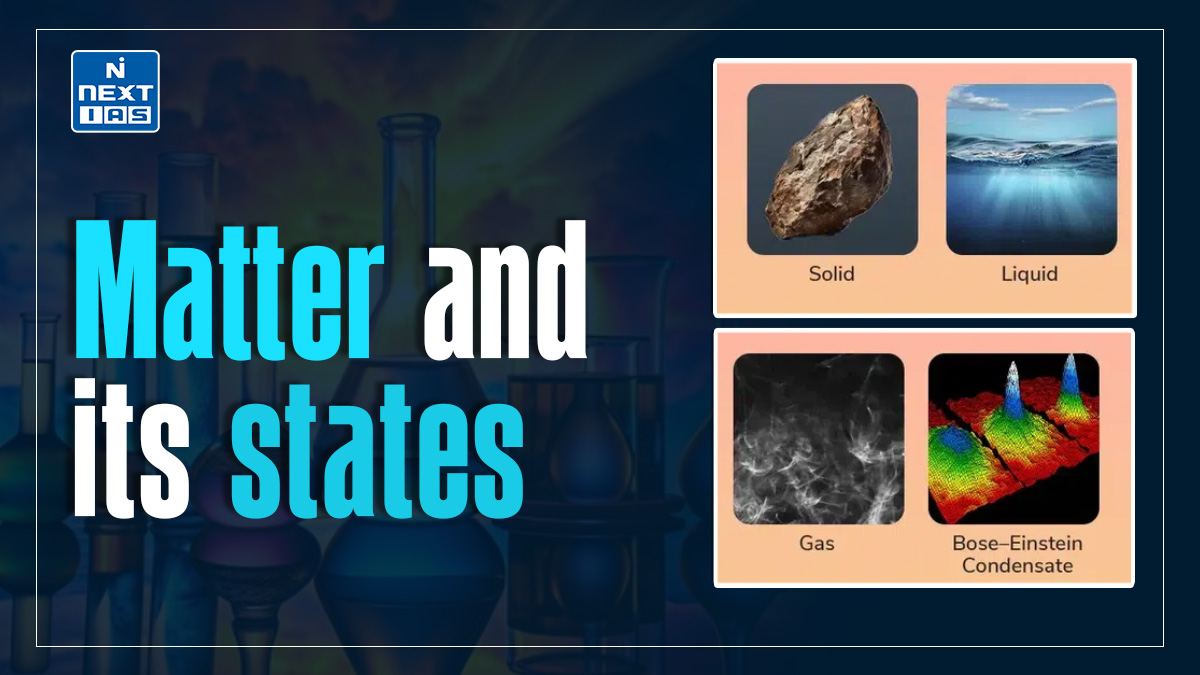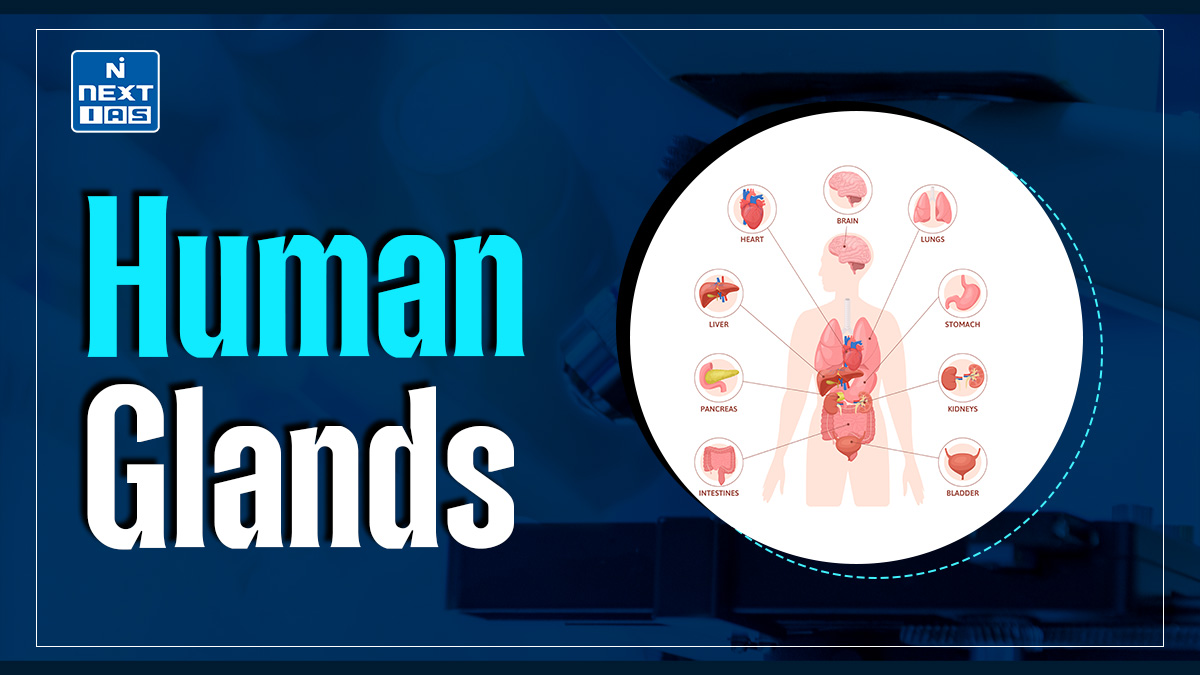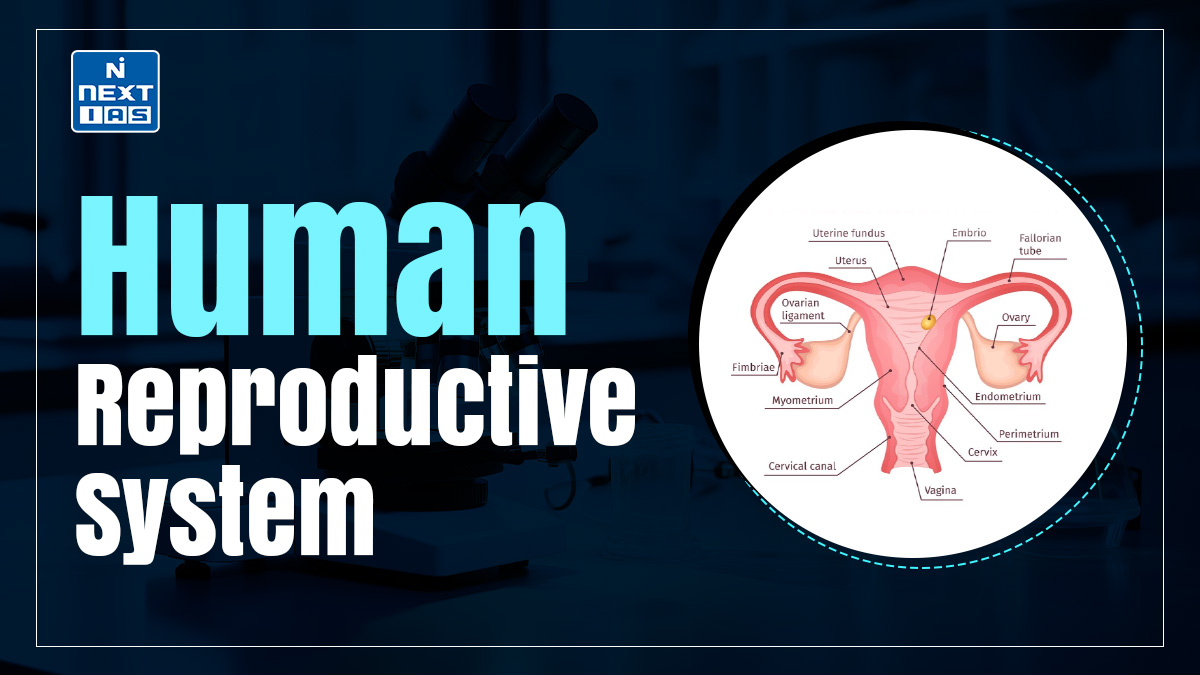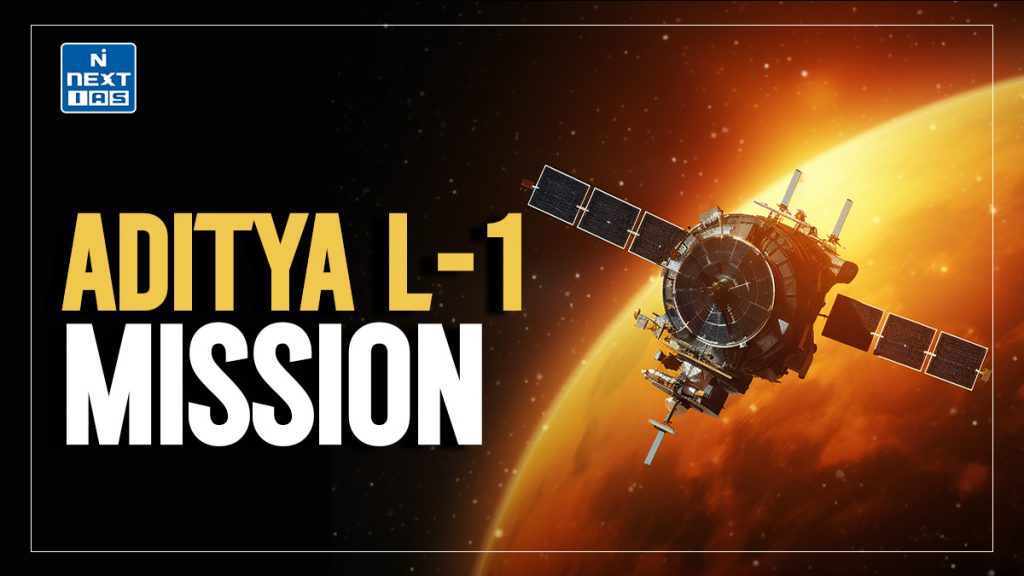
Aditya-L1 is India’s first solar mission, launched by ISRO to study the Sun, particularly the outermost layers, including the photosphere, chromosphere, and corona. Positioned at the L1 Lagrange point between Earth and the Sun, Aditya-L1 aims to enhance our understanding of solar activities and their impact on space weather.
About the Aditya L-1 Mission
- Spacecraft Mission to study the sun.
- Aditya-1 mission will be inserted into a halo orbit around L1 point which is about million Km from Earth.
- Being paced in halo orbit around the Lagrangian point 1 (L1) of the Sun-Earth system has the major advantage of continuously viewing the Sun without any occultation/ eclipse.
- The satellite carries additional six payloads with enhanced science scope and objectives.
How it is different from Aditya 1 Mission?
- Aditva-1 was meant to observe only the solar corona.
- Aditya-L1 With additional experiments can now provide observations of Sun’s Corona (soft and hard X-ray, Emission lines in the visible and NIR), Chromosphere (UV) and photosphere (broadband filters).
- In addition, particle payloads of Aditya L1 will study the particle flux emanating from the Sun and reaching the LI orbit, and the magnetometer payload will measure the variation in magnetic field strength at the halo orbit around L1.
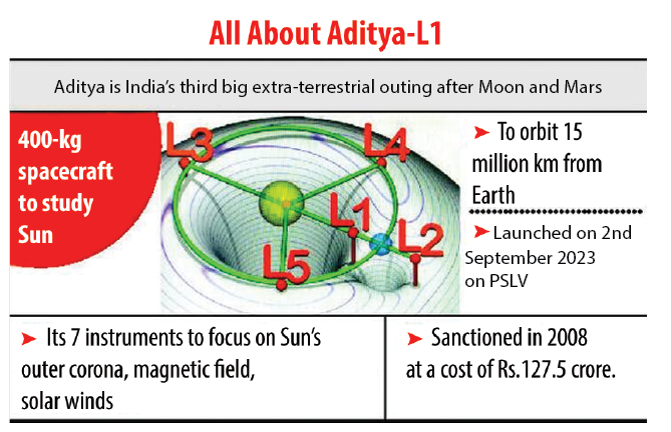
Signification of Aditya L-1
The Aditya-L1 mission is significant for several reasons:
- First Indian Solar Mission: It marks India’s first dedicated effort to study the Sun, showcasing ISRO’s expanding scientific goals.
- Understanding Space Weather: Observing the Sun’s outer layers helps understand solar flares, coronal mass ejections, and their effects on Earth’s space weather, critical for satellite and communications safety.
- Position at L1 Lagrange Point: Stationed at the L1 point, 1.5 million km from Earth, it offers uninterrupted observation of solar activities without interference.
- Global Collaboration: The mission’s findings will be shared globally, contributing to international research on solar physics and space weather.
- Technological Advancement: Aditya-L1 strengthens ISRO’s research and development in space observation, pushing the boundaries of India’s space exploration capabilities.
Some Key International Solar Missions
Here are some key international solar missions aimed at studying the Sun:
- NASA’s Parker Solar Probe (2018): The closest mission to the Sun, Parker Solar Probe is studying the Sun’s outer corona to better understand solar wind and high-energy particles, helping to unravel long-standing solar mysteries.
- ESA and NASA’s Solar Orbiter (2020): Solar Orbiter is designed to observe the Sun’s poles and solar wind, providing detailed images of the Sun and helping scientists understand the Sun’s 11-year solar cycle.
- NASA’s Solar and Heliospheric Observatory (SOHO, 1995): A collaborative mission with ESA, SOHO monitors the Sun’s solar wind, corona, and core structure, contributing significantly to solar research and providing real-time data on solar weather.
- Japan’s Hinode (2006): A JAXA mission with collaboration from NASA and ESA, Hinode studies magnetic fields on the Sun and the mechanisms behind solar flares and sunspot formation.
- India’s Aditya-L1 (2023): ISRO’s first solar mission, Aditya-L1, studies the outermost solar layers, aiming to understand solar activities and their impact on space weather.
- China’s ASO-S (Advanced Space-based Solar Observatory, 2022): Also known as the Kuafu-1 mission, it focuses on studying solar flares, coronal mass ejections, and solar magnetic fields to understand their effects on Earth’s environment.
Each mission offers unique perspectives and data that collectively enhance our understanding of the Sun’s behavior and its effects on our solar system.
Way Forward
ISRO’s Aditya-L1 mission involves several key steps:
- Long-term Data Collection: Aditya-L1’s instruments will continuously monitor solar activity, allowing for extended data collection on phenomena like solar flares and coronal mass ejections, essential for building a robust understanding of the Sun.
- Enhanced Space Weather Prediction: Data from Aditya-L1 can improve models for predicting space weather events that affect Earth, including satellite operations, navigation systems, and power grids, enabling better preparation for geomagnetic storms.
- Collaborative Research: ISRO can share data with global space agencies, fostering international collaboration in solar research and combining insights from missions like Parker Solar Probe and Solar Orbiter.
- Development of Advanced Space Missions: The success of Aditya-L1 can set the stage for future Indian space-based observatories, pushing forward with more sophisticated missions to study other cosmic phenomena.
- Public Engagement and Awareness: By sharing mission insights with the public, ISRO can inspire educational outreach and boost interest in solar science, particularly in India, encouraging future generations of scientists.
- Technological Advancements: Learnings from the mission can contribute to refining technologies used in space observation, enhancing India’s capabilities for deep-space missions and potentially leading to multi-point solar monitoring networks.
Aditya-L1’s journey sets a foundation for ISRO’s growth in space science, expanding India’s role in cutting-edge solar research and space weather prediction.
Conclusion
The Aditya-L1 mission represents a significant leap forward in solar research for India, providing a unique opportunity to observe and understand the Sun’s intricate dynamics. By positioning itself at the L1 Lagrange point, the mission ensures continuous monitoring of solar activities, contributing crucial data on solar radiation and its effects on space weather. This mission not only enhances our scientific knowledge but also strengthens India’s capabilities in space exploration and research. Ultimately, Aditya-L1 stands to enrich global understanding of solar phenomena, fostering collaboration in the study of our nearest star.
Frequently Asked Questions (FAQs)
What is L1 in Aditya-L1?
L1 in Aditya-L1 refers to the Lagrange Point 1, a stable point in space located about 1.5 million kilometers from Earth, where the gravitational forces of the Earth and Sun balance. Aditya-L1 will be positioned at L1 to observe the Sun’s outermost layer, providing crucial solar data.
When will Aditya-L1 reach its destination?
Aditya-L1 is expected to reach its destination at the L1 Lagrange point in about 4 months after its launch. Launched on September 2, 2023, it is projected to arrive around January 2024. Once there, it will begin its mission to study the Sun’s outer atmosphere and solar activities.
What will Aditya-L1 do?
Aditya-L1 will study the Sun’s outermost layer, the corona, and its impact on space weather. It aims to understand solar radiation, solar wind, and their effects on Earth’s climate and communication systems. The mission will provide valuable data to predict space weather and protect satellite infrastructure.
How much time will Aditya-L1 take to reach the sun?
Aditya-L1 is expected to take about 4 months to reach its destination at the L1 point, approximately 1.5 million kilometers from Earth. It will follow a precise trajectory, gradually moving towards L1 for continuous observation of the Sun, which will help in studying solar dynamics and space weather.
What is the current status of Aditya-L1?
As of January 2024, the Aditya-L1 mission is progressing well towards its goals. The spacecraft reached its final destination, the L1 point, after completing several trajectory correction maneuvers. On January 6, 2024, it successfully entered a halo orbit around L1, providing an unobstructed view of the Sun. This marks a significant milestone in its mission to study the Sun’s atmosphere, solar winds, and their effects on space weather.
Which rocket is used for Aditya-L1?
The PSLV-C57 (Polar Satellite Launch Vehicle) rocket is used to launch the Aditya-L1 mission. It is a versatile and reliable rocket developed by ISRO, capable of placing satellites into various orbits, including the Lagrange Point 1 (L1) orbit, where Aditya-L1 will be positioned to study the Sun.
What is the significance and impact on day to day life of ISRO’s Aditya-L1 payloads?
ISRO’s Aditya-L1 mission, with its solar observation payloads, will enhance understanding of solar activity, solar winds, and their effects on Earth’s climate and satellite communication systems. This knowledge can improve space weather forecasting, safeguard communication networks, and advance climate research, directly impacting daily technology and infrastructure.
